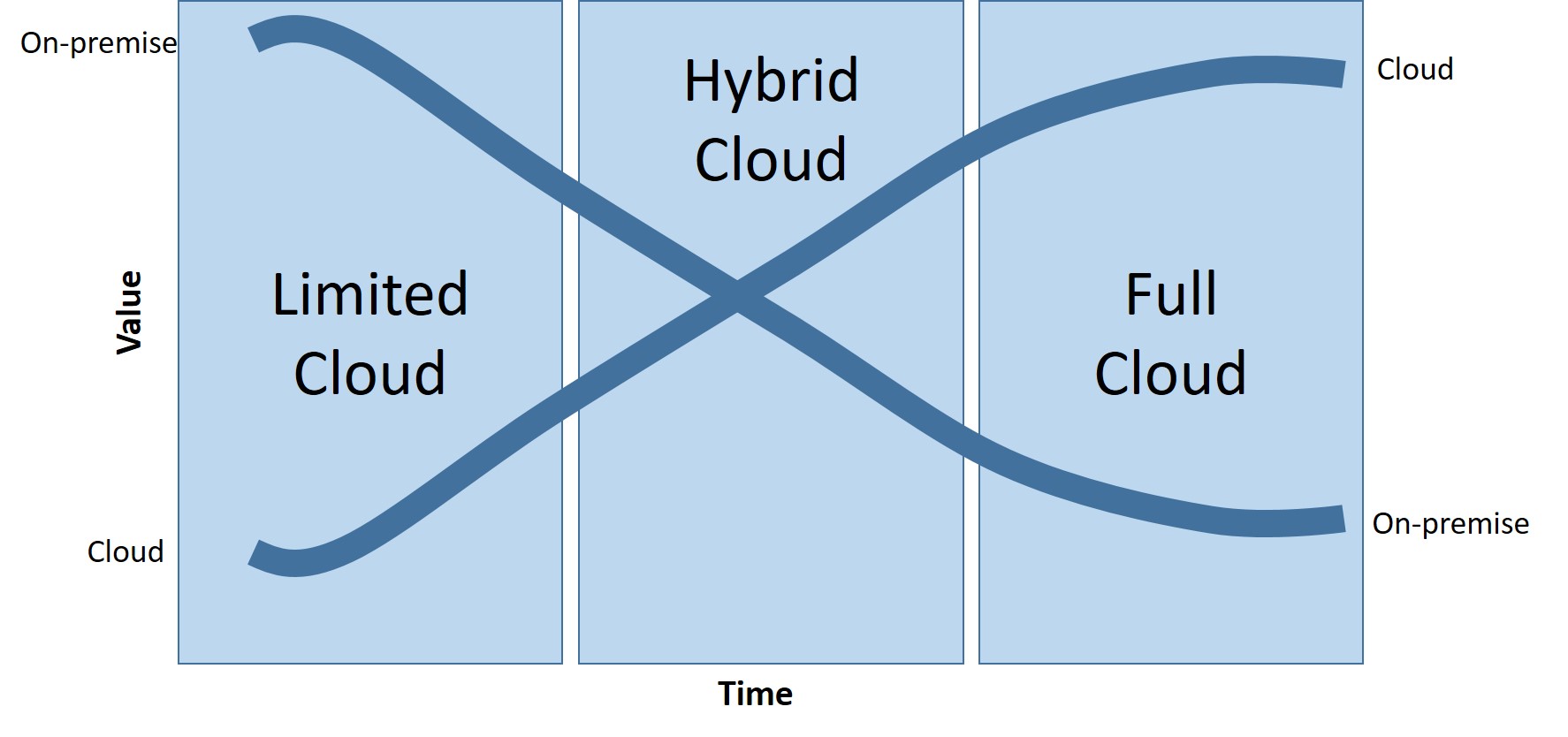When it comes to business transformation and digitalization, the term “cloud-first” is seen as a key enabler for businesses that are considering ERP. A cloud computing strategy should not just focus on resolving technical issues but aim to promote, develop and extract tangible business benefits. Cloud tactics should extend beyond IT and must be embraced by the organization as a whole.
However, “cloud-first” does not mean “cloud-only.” It takes time for an enterprise to develop the skills necessary to run a successful cloud operation, so a cloud computing project will likely be a multi-year effort as the business learns how to leverage the benefits of cloud ERP applications.
The growth of cloud
The adoption of cloud-based applications has grown so significantly that Gartner predicts that more than half of all ERP spending will be on cloud ERP deployments by 2025.
Major reasons for this include:
- Cloud computing strategies are driven by the demand to digitalize operations in response to the disruptive changes being brought about by the Fourth Industrial Revolution
- The rapid cycle of technical innovation and the need to keep modernizing infrastructure is pushing manufacturers into spending on other critical resources and leaving the infrastructure decisions to a cloud provider
- By moving to the cloud, organizations can reduce deployment and upgrade times for applications
- Organizations can use the cloud to reduce the risk of infrastructure disaster and recovery management.
The role of the cloud provider
Manufacturers do have a choice of cloud computing platforms. Although the hyperscale providers – Amazon AWS, Microsoft Azure, Google, IBM – dominate the public cloud, there are much smaller and niche providers who satisfy geographical and business needs that the large players do not cover. To reduce the risks of lock-in to one provider, businesses can opt for a multi-cloud strategy.
Where to deploy your ERP
If you are a manufacturer evaluating either a new ERP system, or considering how to make your existing ERP implementation better, one of the issues you will face is where your software should run – in the cloud, on-premise, or as a hybrid.
ERP and a public cloud platform
Running your ERP system on a public cloud platform (e.g. Microsoft Azure) means you only pay for the resources that you use, and costs vary depending on how you use the cloud infrastructure. There are pros and cons to this, especially when you start. Initially, you will see the benefits of not spending on your own infrastructure. But businesses often don’t have a clear idea at the beginning of how heavy their cloud workload will be and therefore initially budgeting may be difficult.
Some of the other common pitfalls when moving to the cloud are:
- Underestimating the need to retrain staff or hire staff for new cloud roles
- Not understanding the shared and individual responsibilities between you, the customer, and the cloud provider
- Not performing proper governance, compliance and security audits before embarking on the cloud journey
- Treating the cloud migration as a once-off effort rather than a multi-stage transition.
For manufacturers that operate in several locations or across multiple time zones, a cloud ERP makes it possible for everyone to access a single system, rather than running their own local instances. This brings significant benefits in terms of centralized reporting, stronger governance and compliance, and improved collaboration across the enterprise. A single system also reduces the need for multiple skillsets deployed to support different locations.
With a cloud ERP system, manufacturers can look at data from new technologies like the Internet of Things (IoT), and AI applications which are almost exclusively cloud-based.
Managed cloud services
If you want to go the cloud route but don’t have the time, resources and additional staff to run a public cloud implementation, then managed cloud services may be the answer.
- The managed cloud services model provides organizations with dedicated, single-tenant, leased infrastructure from a managed services provider
- Managed cloud services offer the benefits of Infrastructure-as-a-Service (IaaS) – infrastructure, storage, operating system, networking services – with additional services like security and application maintenance from the managed services provider.
Cloud responsibility model
| IaaS | Managed cloud services |
| Users | Users |
| Data | Data |
| Application | Application |
| Operating system | Operating system |
| Network | Network |
| Hypervisor | Hypervisor |
| Infrastructure | Infrastructure |
| Physical | Physical |
- Customer responsibility
- Provider responsibility
- Managed cloud services provide an entry point to the cloud. For manufacturers that have applications which are not cloud-native, i.e., are on-premise systems ‘lifted’ into the cloud, this route reduces the cost and risk of conversion to a cloud platform, and allows the IT department to more clearly understand and identify where spending on the cloud can be justified.
On-premise
Some applications will migrate and perform well in the cloud, but others can be challenging to migrate, especially if they use custom integrations or non-standard interfaces. In a manufacturing environment, interfaces to specific machines may be highly customized and difficult to implement via the cloud.
By running an ERP system on-premise, an enterprise retains full control of what happens. In highly regulated industries with privacy and compliance concerns, on-premise deployment provides a greater level of first line control. Operating an on-premise deployment also means that companies with regulatory concerns have full accountability and know exactly where and how their data is kept secure at all times.
For on-premise ERP systems used across multiple locations, web-based access to your ERP application can enable remote locations to use a single system.
Hybrid
Where to deploy your ERP system is not an either/or decision. There is no reason why you cannot run some business systems in the cloud, and others on-premise – a hybrid environment.
In the cloud, manufacturers can collaborate with suppliers on quotes and orders using an online portal. Allowing customers and sales people to access up-to-date information on deliveries and pricing via the web or mobile devices can also be supported using the cloud.
On the other hand, factory floor applications may be better-implemented on-premise. Another on-premise use case is warehouse management software that provides real-time information on receiving, put-away, picking and packing.
Making your choice
There is no right or wrong answer to the cloud ERP vs. on-premise ERP debate. Every manufacturing or distribution company has different requirements that will influence their deployment strategy. Choosing your solution boils down to what’s best for your organization. Before you make your decision, ensure that your ERP solution provides the options and let your ERP vendor assist you by performing a thorough and in-depth appraisal of your company’s unique needs in order to provide you with the ideal solution.







